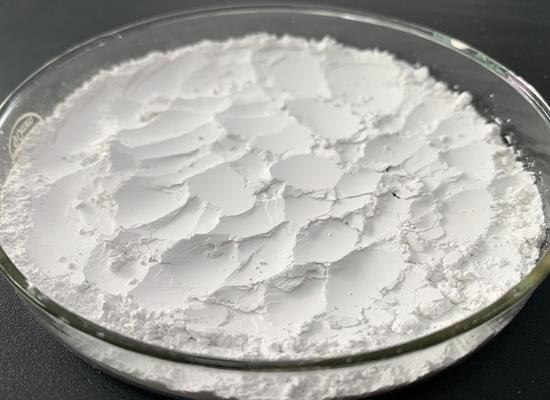D-Proline: Biological Distribution and Applications in Pharmaceutical Synthesis
Apr 30,2024
General Description
D-Proline, a non-canonical amino acid with a unique distribution pattern in biological systems, plays a crucial role in pharmaceutical synthesis. Its presence in specific proteins and peptides within cells, as well as its involvement in metabolic pathways, highlights its importance in maintaining cellular homeostasis. In organisms, D-Proline tends to accumulate in tissues requiring its specific functions, influenced by factors such as diet and environmental conditions. In pharmaceutical synthesis, D-Proline serves as a fundamental building block for the creation of various drugs, particularly in asymmetric synthesis and peptide-based drug development. Its structural versatility enables the synthesis of diverse pharmaceutical compounds, enhancing their efficacy and reducing potential side effects. The optimization of D-Proline synthesis techniques has further facilitated its widespread utilization in drug discovery, driving innovation and progress in pharmaceutical research.

Figure 1. D-Proline
Biological Distribution
D-Proline, a unique amino acid variant, exhibits a fascinating distribution pattern throughout various biological systems. This non-canonical amino acid is notable for its rare occurrence in nature, yet its presence is crucial in certain biochemical processes. In the cellular environment, D-Proline is often found in specific proteins or peptides that require its unique structural and functional properties. These proteins tend to be localized in specific subcellular compartments, such as the cytoplasm or organelles, where they perform vital roles in maintaining cellular homeostasis. Moreover, D-Proline is also known to be involved in metabolic pathways, where it can be synthesized or degraded to meet the cellular demands. Its biosynthesis often occurs through enzymatic reactions catalyzed by specific enzymes, ensuring its precise regulation within the cell. In terms of its distribution in organisms, D-Proline is not uniformly present in all tissues or organs. Instead, it tends to accumulate in certain tissues that require its specific functions. For instance, it may be abundant in tissues involved in detoxification or stress response, where its unique chemical properties aid in these processes. Furthermore, D-Proline's distribution can also be influenced by external factors such as diet or environmental conditions. Certain dietary components or environmental stimuli may promote its synthesis or accumulation in specific tissues, further highlighting its adaptability and versatility in biological systems. In summary, D-Proline exhibits a complex yet intriguing distribution pattern throughout biological systems. Its precise localization and regulation within cells and tissues contribute to its vital roles in maintaining cellular function and organismal homeostasis. 1
Applications in Pharmaceutical Synthesis
D-proline plays a crucial role in pharmaceutical synthesis, serving as a vital intermediate in drug production processes. Its applications, while relatively limited, are significant in specific domains, particularly in pharmaceutical synthesis. In pharmaceutical synthesis, D-proline emerges as a fundamental building block for the creation of various drugs and biologically active molecules. Its structural versatility enables its utilization in the synthesis of a diverse range of pharmaceutical compounds, including antibiotics, antitumor agents, antiviral drugs, and more. One of the key applications of D-proline lies in its contribution to asymmetric synthesis, a pivotal technique in pharmaceutical research and development. By synthesizing asymmetric D-proline, chemists can generate compounds with specific biological activities, enhancing their efficacy and reducing potential side effects. This ability to tailor molecules with precise stereochemistry is crucial in the pursuit of novel therapeutics with improved pharmacological profiles. Moreover, D-proline serves as a crucial component in the synthesis of peptide-based drugs. Peptides, composed of amino acids including D-proline, exhibit high specificity and affinity towards biological targets, making them valuable candidates for therapeutic interventions. By incorporating D-proline into peptide sequences, researchers can enhance the stability, bioavailability, and biological activity of peptide drugs, thus expanding their therapeutic potential. Furthermore, the synthesis of D-proline itself has been optimized over the years, leading to improved methodologies and increased accessibility of this important intermediate. These advancements in synthesis techniques have facilitated its widespread utilization in pharmaceutical research and development, driving innovation and progress in drug discovery. In conclusion, D-proline plays a critical role in pharmaceutical synthesis, serving as a versatile intermediate for the production of various drugs and biologically active molecules. Its applications in asymmetric synthesis and peptide-based drug development highlight its significance in advancing pharmaceutical research and expanding the arsenal of therapeutic options available to healthcare practitioners. 2
Reference
1. Pujals S, Sabidó E, Tarragó T, Giralt E. all-D proline-rich cell-penetrating peptides: a preliminary in vivo internalization study. Biochem Soc Trans. 2007; 35(Pt 4): 794-796.
2. D-proline. National Center for Biotechnology Information. 2024; PubChem Compound Summary for CID 8988.
- Related articles
- Related Qustion
- D-Proline accumulation in plants Dec 21, 2023
D-Proline accumulation in plants under stress aids osmotic balance and ROS scavenging, but externally supplied D-Proline may be toxic due to P5C.
- D-proline:A member of the D-amino acid family Sep 19, 2023
D-proline(D-Pro), also known as D-hydroxypyrrole carboxylic acid, is an important five-membered cyclic amino acid and an important chiral compound.
- Split preparation D-proline Nov 5, 2021
The price ratio of D-proline and L-proline is quite different. Therefore, D-proline is prepared from L-proline through asymmetric transformation. Proline has a very important meaning.
Supplementation with pyridoxal 5'-phosphate monohydrate can synthesize neurotransmitters such as dopamine and serotonin, maintaining a healthy nervous system.....
Nov 4,2025Biochemical EngineeringMetformin targets aging pathways beyond glycemic control, activating AMPK and influencing metabolism, but may cause gastrointestinal discomfort and rare serious side effects.....
Dec 6,2024APID-Proline
344-25-2You may like
- D-Proline
-

- $0.00 / 1kg
- 2025-12-05
- CAS:344-25-2
- Min. Order: 1kg
- Purity: 98.5%-101%
- Supply Ability: 500kg
- D-Proline
-

- $0.00 / 1kg
- 2025-12-04
- CAS:344-25-2
- Min. Order: 1kg
- Purity: 98%
- Supply Ability: 20t
- (R)-pyrrolidine-2-carboxylic acid
-

- $29.00 / 1mL
- 2025-11-10
- CAS:344-25-2
- Min. Order:
- Purity: 99.91%
- Supply Ability: 10g






